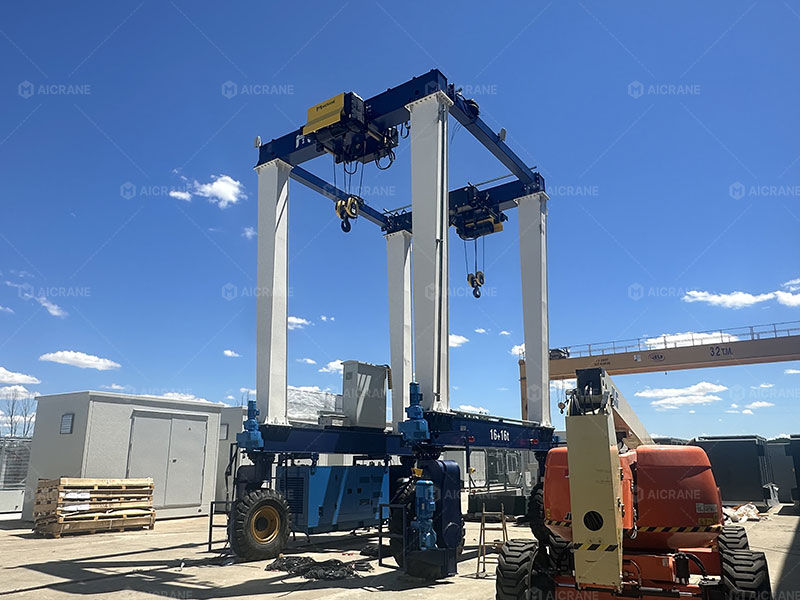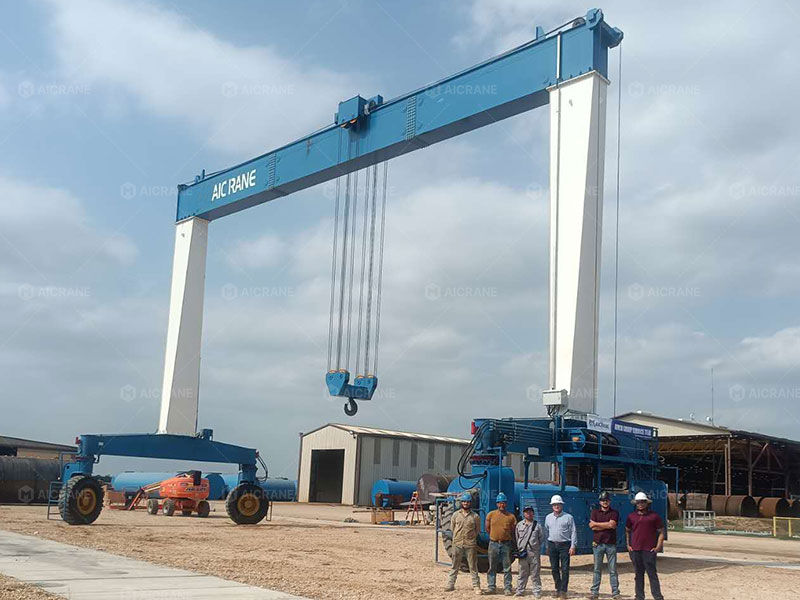Mobile Gantry Cranes: Design and Production Flexibility
- charlespsnow
- Aug 3, 2025
- 4 min read
In industries where material handling efficiency and space utilization are critical, mobile gantry cranes stand out as one of the most versatile lifting solutions. These cranes provide a unique combination of mobility, load capacity, and adaptability, making them ideal for a wide range of applications including manufacturing, warehouses, shipyards, and construction sites.
One of the greatest advantages of mobile gantry cranes lies in their design and production flexibility. Manufacturers and users alike benefit from the ability to tailor these cranes to meet specific operational requirements. In this article, we explore the key aspects of mobile gantry crane design, the flexibility available during production, and how these elements contribute to improved performance and cost efficiency.

What Are Mobile Gantry Cranes?
A mobile gantry crane is a type of gantry crane equipped with wheels or casters, allowing it to move freely across a flat surface. Unlike fixed gantry cranes, which are anchored in place, movable gantry cranes can be relocated quickly and easily, making them ideal for operations that require frequent repositioning of the crane.
They are typically used for:
Loading and unloading materials
Transporting goods within a facility
Assembly line support
Maintenance tasks for large equipment
Mobile gantry cranes come in a range of configurations - from lightweight portable units for small shops to heavy-duty models capable of lifting 50 tons or more.
Key Design Features of Mobile Gantry Cranes
The design of a mobile gantry crane must strike a balance between strength, stability, mobility, and modularity. Here are the primary elements considered during design:
1. Frame Design
The crane frame can be configured in various styles:
A-frame: Offers excellent stability and is ideal for high-lifting capacities.
U-frame or square frame: Allows maximum access to the load area and is suitable for broader spans.
2. Adjustability
Many mobile gantry cranes are designed to allow:
Height adjustment for variable headroom
Span adjustment for different work areas
Trolley positioning flexibility to improve load handling precision
3. Wheel Configuration
Wheels are crucial to mobility and can include:
Swivel casters for easy steering
Locking mechanisms to ensure safety during lifting
Pneumatic tires for outdoor use on uneven terrain
Trackless options or track-bound guidance depending on the application
4. Power and Lifting Mechanisms
Mobile gantry cranes can be:
Manual (push-pull) for light-duty lifting
Motorized with electric or hydraulic drives for heavy-duty loads
Battery-powered for cordless and eco-friendly operations
Hoisting systems typically include electric chain hoists, wire rope hoists, or manual chain blocks depending on load capacity and lifting speed requirements.
Production Flexibility: Meeting Varied Industrial Needs
Mobile gantry crane manufacturing offers a high degree of customization. Here’s how manufacturers tailor the production process:
1. Capacity Ranges
Mobile gantry cranes can be designed with load capacities ranging from 10 ton to over 500 tons, depending on the application. Light-duty models are used in workshops and garages, while heavy-duty types are built for industrial plants and shipyards.
2. Material Selection
Cranes are typically fabricated using:
High-strength steel for durability and load-bearing capability
Aluminum alloys for lightweight and corrosion-resistant models, especially in cleanrooms or corrosive environments
The ability to choose different materials allows users to balance strength with portability.
3. Modular Construction
Many mobile gantry cranes are produced in modular form, allowing for:
Easy transportation and on-site assembly
Expansion or reconfiguration based on changing facility layouts
Cost-effective production and maintenance
This modularity also allows users to dismantle and relocate cranes between projects or departments with minimal effort.
4. Power Supply and Drive Options
Manufacturers offer various power and drive solutions, including:
Electric drives (powered by cable reels or battery)
Hydraulic actuators for smooth, high-capacity lifting
Manual systems for low-cost, low-intensity applications
These options allow the crane to be tailored for indoor or outdoor usage, frequency of movement, and available energy sources.

Benefits of Design and Production Flexibility
✅ Enhanced Customization for Diverse Applications
The ability to customize design parameters such as load capacity, dimensions, wheel types, and hoist systems makes mobile gantry cranes adaptable to a wide variety of industries, including:
Automotive and aerospace manufacturing
Shipbuilding and marine operations
Steel fabrication plants
Warehouses and distribution centers
✅ Improved Workflow Efficiency
Mobile gantry cranes can be repositioned to follow the workflow, eliminating the need for fixed handling systems. This allows for:
Reduced material handling time
Increased production line efficiency
More flexible workspace layouts
✅ Cost-Effectiveness
Compared to fixed overhead cranes, mobile gantry cranes:
Require no permanent foundation
Incur lower installation and relocation costs
Offer long-term value through multi-project or multi-location usage
✅ Shorter Lead Times
Because of standardized modular designs and flexible production lines, manufacturers can often shorten delivery schedules for mobile gantry cranes, meeting urgent client needs.
Design Considerations for Optimal Performance
To fully leverage the benefits of design and production flexibility, it is important to consider the following when selecting or ordering a rubber tyre gantry crane:
Load Characteristics: Weight, dimensions, and center of gravity of the loads to be lifted.
Work Environment: Indoor or outdoor, floor condition, temperature, and exposure to chemicals or moisture.
Frequency of Use: Determines whether a manual or motorized system is more appropriate.
Mobility Requirements: Will the crane move within a small zone or across wide areas? Do you need steering, braking, or guided tracks?
Safety Standards: Compliance with local and international regulations such as OSHA, CE, or ISO standards.
Future Trends in Mobile Gantry Crane Design
With technological advancements and rising environmental concerns, the following trends are shaping the future of mobile gantry crane production:
Smart controls and remote operation for safer and more efficient handling
Telematics and load monitoring systems for real-time feedback
Eco-friendly materials and coatings
Battery-powered electric drives with regenerative braking
Automation-ready designs for integration into Industry 4.0 smart factories
Conclusion
Mobile gantry cranes offer unmatched design and production flexibility, making them a smart investment for companies seeking versatile, portable, and efficient lifting solutions. Their modularity, customizable specifications, and ease of deployment across varying industries allow for rapid adaptation to shifting operational demands.
As industries continue to evolve and demand more agile production tools, mobile gantry cranes - backed by intelligent design and flexible manufacturing - are set to play an increasingly vital role in the future of material handling.










Comments